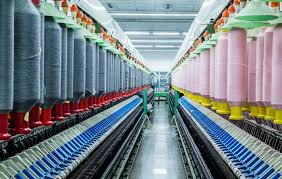Suman D. Mundkur and Dr. Ela M. Dedhia
Assistant. Professor, Department of Textiles and Apparel Designing, SVT College of Home Science (Autonomous), S.N.D.T Women’s University, Juhu Road, Mumbai-400049, India.
Email: suman_mundkur@yahoo.com
Associate Professor and Ph.D Guide, Head of Specialization, Textiles and Fashion Technology,
College of Home Science, Nirmala Niketan, (Affiliated to Mumbai University), 49, New Marine Lines, Mumbai 400020, India.
Email: elamanojdedhia@yahoo.com
Emerging technologies make end-of-life products find new applications in technical textiles
On world recycle week starting April 18, 2016. ‘Give us your old, your broken, your worn-out and your out-of-style clothes’ was the message H&M was sending out when seeking to collect 1,000 tonnes of old clothing from customers across its 3,600 stores worldwide. Wang (2006) stated that recovery from the waste stream includes re-use of a product in its original form; the largest volume of goods is sorted for second hand clothing markets. Closing the loop form cradle to grave in textiles is gaining importance worldwide.
Certain waste ceases to be waste – if become the raw materials for further development to bring economic or environmental benefits and thus end of waste specifications and criteria have to be developed (Sinha et al : 2009). As reported in the Indian textile Journal (2009), recycling in the textile and clothing sector can take several forms. The best known method involves the manufacture of a textile or clothing product from recycled consumer waste—such as plastic bottles or waste polyester yarns or fabrics. Some companies purchase second-hand material and use it to manufacture a new product, which is another form of recycling (Oser, 2011).
According to Wang (2006), two categories of conversion to new products are used by the breakdown of fabric to fiber: shoddy (from knits) and mungo (from woven garments) are terms for the breakdown of fabric to fiber through cutting, shredding, carding and other mechanical processes. The fiber is then re-engineered into value-added products. These value-added products include stuffing, automotive components and carpet underlay’s building materials such as insulation and roofing felt and low-end blankets. Clothing that has seen the end of its useful life as such may be turned into wiping or polishing cloths for industrial use. T-shirts are a primary source for this category because the cotton fiber makes an absorbent rag and polishing cloth.
Recycled raw materials have been looked down upon by manufacturers of technical textile products. Loss of strength, reduction in fibre length, problems in spin ability in yarn construction and web formation for nonwoven have limited the use of reclaimed fibres from end-of-life textile products including clothing and home textiles. Gulich (2010) argued that depending on product functions, reclaimed fibres can be looked upon as conventional in technical textiles, particularly in nonwovens (mobility textiles which mainly serve to cover up surfaces or to insulate materials, agro-textiles, and geo-textiles which are used to protect soil against erosion). In all these cases reclaimed fibres are used because of low prices nor merely because they cover something up. However, reclaimed fibres are also applied in nonwovens to utilize highly valuable functional components.
The range of application can be vast. While rags as industrial wipes and mattress stuffing are well known and accepted, less thought/ attention has been paid in exploring end-uses. Gulich (2010) stated that producers use reclaimed fibres for a number of reasons: They are low cost. Raw materials and waste disposal are becoming more and more expensive. Ecological aspects, too, play an ever more important role.
Batra & Pourdeyhimi (2012) stated that the processing of nonwovens depends on a range of technologies, some adapted from the textile and paper industries, others developed uniquely for nonwovens production. The fiber type (s) and specifications selected are dictated by the desired properties of end-use items; the available technologies of preparation and web formation, and the economics of processing raw materials from preparation to finishing.
Over the past decade there has been a marked increase in the development of nonwoven technologies for the successful processing of alternative raw materials, including natural fibers and for the recycling of waste materials, according to an article in the Technical Textiles & Nonwoven – Excellent (2014). It was reported that Freudenberg Vitech, is an industry leader in the production of nonwoven automotive fabric made from 100% post-consumer recycled material at Hopkinsville in Kentucky. Freudenberg’s Nonwovens, headquartered in Durham, North Carolina, uses millions of pounds of 100% post-consumer and post-industrial recycled plastic a year to make environmentally sustainable materials for building and construction substrates. Applications for the products made on this machine include automotive preformed panels, seat, wadding, sound-proofing and thermal insulation materials, furnishing products such as sofa, mattress and chair weddings, bed quilting and sleeping bags, roof and wall insulation materials, packaging, interlinings and sanitary articles.
A recent research on the Technical textile applications included the use of reclaimed fibers for needle-punched nonwoven. The nonwoven developed from as packing material, thermal insulation layer in winter jacket, sound absorbing materials. Successful trials were conducted to study the application of the nonwoven for packing household appliances and furniture in relocating homes through professional service providers. The transport worthiness test reports showed favourable results in using the product as a cushioning material in conjunction with other packing materials. Additional reinforcement in the form of hard board angle will be required to protect the corners from damage in transit. Nonwoven made from shirting waste was found to provide thermal insulation in winter jackets or light winters. The sound absorbing properties of the nonwoven from T Shirts and dress materials were found to absorb sound satisfactorily with a Sound Absorbing Coefficient at mid to high frequencies. It was found that materials with dissimilar fibres have better Noise Reduction Coefficients. Further improvement could broaden the scope for research and encourage entrepreneurial initiatives.

